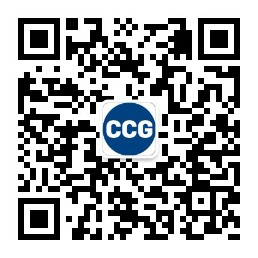全球治理、国际组织、区域合作和“一带一路”是CCG全球化研究领域的重要组成部分。作为中国最早以全球化命名的智库,CCG创办了“中国与全球化论坛”并设置全球化相关国际议题;在海内外举办了“WTO改革”、“多边治理”、“一带一路”等专题研讨会,把“一带一路”这一主题首次带到国际安全与治理领域的世界高规格会议——慕尼黑安全会议。基于多年对全球化领域的全面研究,CCG发布出版了《“一带一路”的国际合作共赢方案及实现路径》,《全球化与逆全球化》、《全球化向何处去:大变局与中国策》等研究报告和图书,其中Edward Elgar 出版社出版的Handbook on China and Globalization是为数不多的由智库在国际权威学术出版社出版的全英文书籍。CCG提出的两项倡议入选首届巴黎和平论坛,为中国智库更充分参与全球治理与国际合作开拓了崭新模式。此外,CCG与WTO、UN 、经济合作国家组织(OECD)、世界银行、国际货币基金组织(IMF)等众多国际组织、国际智库和相关机构建立了良好的长效合作机制。
-

魏建国:外贸更大暴风雨将至,中国加紧突围
专家简介
2018年12月6日 -

霍建国:培育民营企业内生动力是提升外贸国际竞争力的重要抓手
专家简介
2018年12月6日 -

Zamir Ahmed Awan: Currency swap deals good for developing countries
By Zamir Ahmed Awan, a senior fellow with Center for China and Globalization(CCG) The global trade is dependent on US dollar and whenever the US wants to punish any country, it easily imposes sanctions and freezes its accounts. An overall vulnerability has long been felt, but no country was able to challenge the dollar as an internationally acceptable currency for global trade. In the past, few countries dared to challenge the dollar trade but eventually, they faced severe consequences like Iraq and Libya. Now many countries in the world are of the opinion to promote “currency swap” on the bilateral basis which may resolve some of their issues. China’s growing global economic clout is out of the necessity to make the yuan a stronger international medium of exchange. China launched a pilot project back in July 2009 to use yuan for cross-border settlements. As China is the second largest economy, it does trade with almost all countries of the world and enjoys a trade surplus in its favor. China is promoting more bilateral trade among its trade partners and according to estimates, it has one of the world’s largest diverse currency reserves in the world. There are more than 60 countries which trade with China in its currency, RMB. In 2016, there were around 30 countries which had already signed currency swap agreements with China. The latest addition is Japan which entered into a currency swap with China recently amounting to 200 billion yuan (29 billion US dollars). Pakistan signed a currency swap agreement with China in December 2011. Initially the agreement was for three years, subsequently renewed, and up to 10 billion yuan (1.4 billion US dollars) were available to Pakistan to swap against rupees. In fact, the State Bank of Pakistan allows settling payments in US dollar, euro, Japanese yen, in addition to RMB. After the yuan attained the status of a global reserve currency – the third one after the US dollar and the euro – on November 30, 2016, China accelerated its efforts for greater use of its own currency for settling transactions with other nations. Pakistan has a trade deficit of around 30 billion US dollars and needs a huge amount of dollars to maintain smooth day-to-day transactions. Out of this amount, around 46 percent is due to the trade deficit with China. After having a currency swap agreement, dollar pressure on Pakistan may largely be reduced. It is a great relief to the fragile economy of Pakistan. In the current geopolitical scenario, it is visible that the US is moving towards confrontation using all its elements of power, especially the economic power. This pressure can be released to some extent by having a currency swap among the trading partners on a bilateral basis. It will support the stability of the global economy and may rescue small and fragile economies. Trading in local currencies will also weaken the unilateral sanctions of global powers, especially, in the case of Iran, where the US unilaterally withdrew from the JCPOA. The JCPOA was a hard-earned agreement signed by the permanent members of the United Nations Security Council, namely China, France, Russia, the UK and the US plus Germany (P5+1). If the US doesn’t want to trade with Iran anymore, then there should be other mechanisms in place for the bilateral trade to continue. Furthermore, it is strongly suggested to establish an Asian Monetary Fund or something similar to the International Monetary Fund (IMF), with the aim to support small and weak economies, especially in Asia, Africa, and Latin and South America. The fund should help countries irrespective of their regional alliances and should purely be given on need basis. The present IMF regime has a clear bias towards countries not in conformity with US foreign policy. The setup of an Asian Infrastructure Investment Bank (AIIB) is a great step for the developing countries. The AIIB establishment is a positive step in the right direction and has been producing the desired results. The AIIB is a Chinese initiative but it has provided funds for infrastructure projects in many developing countries in Asia as well as in Africa. Even India is a beneficiary of AIIB, and this is a perfect example of Asian cooperation beyond political differences. China has developed to a stage where it can play a leading role in global “peace, stability and development.” The developing world should join China’s Belt and Road Initiative to achieve this endeavor. About Author Zamir Ahmed Awan is a senior fellow with Center for China and Globalization(CCG) and a sinologist at the National University of Sciences and Technology.
2018年11月27日 -

李毅仁:钢铁产业要在融入全球价值链中 实现高质量发展
在2018年11月16日-17日由全球化智库CCG、中国国际经济合作学会和三亚市政府共同主办,中国美国商会和中国欧盟商会协办,联合国工业与发展组织作为支持单位的第五届中国企业全球化论坛在三亚海棠湾红树林度假酒店举行。本届论坛设立了十五场聚焦经济全球化和中国企业全球化主题的分论坛,八十余位国内外知名“走出去”企业领袖、政经领域官员和学者、外国使节、国际商务专家等嘉宾共聚一堂,共计三百余人出席大会,为中国企业全球化分享智慧与经验。 在平行论坛六“全球价值链中的中国制造与世界制造——如何互补与提升”上,与会专家围绕相关话题展开了热烈充分的深度探讨。 河钢集团战略总监李毅仁认为,作为重要的基础材料工业,中国钢铁工业经过改革开放四十年的快速发展,不仅有力支撑了国民经济发展,推进了工业化、城市化进程,也形成了较为完整的产业发展体系,成为我国具有国际竞争力的产业之一,在技术、人才、装备、环保、产品、客户、服务等方面,具备了参与全球资源配置和全球价值链分工的条件。钢铁产业正处于转型升级的关键时期,要在新的起点上适应需求结构变化实现高质量发展,必须积极有效地融入到全球价值链中,提高资源要素的配置能力和协同创新能力。河钢作为传统的钢铁企业,近年来,借助国际化发展,在融入全球钢铁产业价值链中,通过有效配置全球资源,实现了快速发展,形成了从资源、制造、贸易到金融、服务的全产业链、立体化发展格局。海外资产达到93亿美元,海外营业收入达到800亿人民币/年,成为中国跨国指数和全球化程度最高的钢铁企业和原材料制造企业。同时,借助全球制造、研发、服务三大平台,加速推进管理、经营、人才、客户、市场等要素国际化,有效促进了企业的转型升级。目前,河钢已经成为中国最大的家电用钢制造企业,第二大汽车用钢制造企业,中国核电用钢、能源用钢、高层建筑桥梁用钢的领导品牌,创建了业内公认的世界最清洁钢厂。在加快传统产业发展的同时,河钢正在推进由钢铁向材料,由制造向服务的转型升级,努力建设成为以钢铁材料为基础的“钢铁材料+工业服务”为主营业务的综合性跨国产业集团。 李毅仁强调,从一般的贸易关系发展到产业链的嵌入式合作关系,是一个产业,一个企业走向成熟的标志。原材料工业是制造业的基础,作为传统型制造业,尤其是象钢铁这样的原材料工业,必须以更加积极、开放的姿态融入到全球制造业价值链中去。一方面,通过融入,学习借鉴和分享欧美发达国家几百年工业化进程积淀的文明成果,掌握先进企业经营发展理念和国际游戏规则。一方面,通过合作,主动参与全球产业链分工,实现企业之间、产业链之间的跨界融合发展与协同创新,共同构建一个可持续发展的产业生态圈。 河钢在过去五年的国际化发展中,创造了"战略管控十本土化管理"的经营发展模式,控股经营的海外企业不断融合创新,保持了良好的发展态势。目前正在推进的向材料精深加工和现代工业服务业的转型,为河钢参与全球产业价值链的分工与协同创造了广阔平台。当今时代,钢铁已经成为聚集全球创新要素的重要载体,河钢将在全球化和国际分工协同发展中不断赋予钢铁新的内涵,深入对接客户,创造新的价值。
2018年11月21日 -

如何看待未来出口走势?
9.9%——前三季度,我国货物贸易进出口交出一份平稳运行、稳中有进的答卷。只是,细分来看,出口同比增长6.5%,进口增长14.1%。未来出口会怎样?
2018年11月1日


